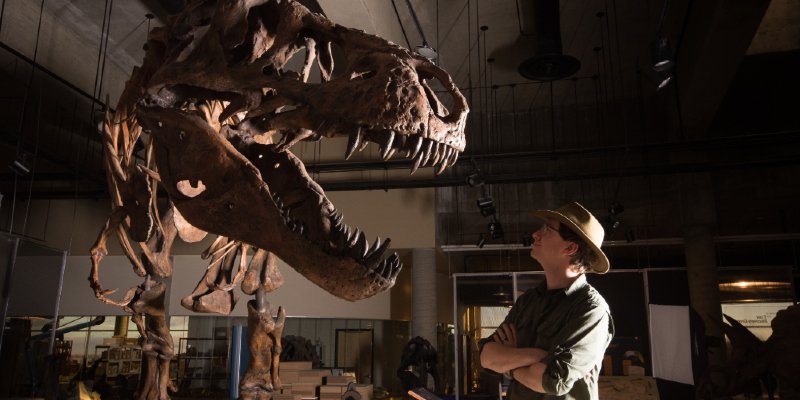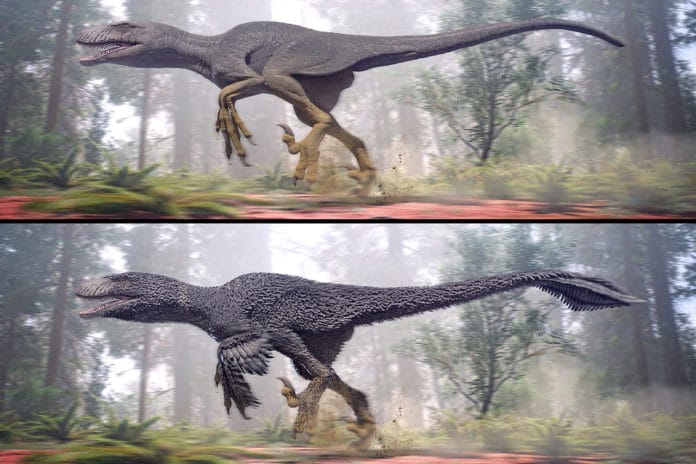Many dinosaurs were covered with simple hair-like feathers. These feathers solely served as insulation to keep dinosaurs warm and had absolutely nothing to do with flight. But it has been unclear how these simple hairy feathers later evolved into complex feathers on wings.
New research led by a College of Charleston researcher suggests that attracting mates with the showy display may have helped dinosaurs develop feathers that let them take flight.
“The first complex wing feathers show up in tiny raptor dinosaurs that could parachute and glide flying-squirrel-style through the prehistoric treetops,” said Scott Person, the lead author of the study and curator of the Mace Brown Museum of Natural History at the College of Charleston. “In this study, we explore how dinosaurs went from staying warm with simple hairy feathers to gliding on complicated wing feathers.”
Persons and his colleagues from the University of Alberta propose that it was not natural selection, but sexual selection, that drove the evolution of complex feathers. This is similar to the brilliant tail feathers that are believed to help male peacocks catch the attention of potential mates.

The study makes the case that larger, stiffer, flatter feathers very gradually evolved as showy fans on the arms and tails of dinosaurs to be waved and waggled in courtship displays, leading eventually to the evolution of birds – an interpretation supported by a growing fossil record of early feathers.
The evolution:
The evolution of avian flight is one of the most important transitions in vertebrate evolution. There are now more than ten thousand species of birds and are the only group of dinosaurs to survive the mass extinction. The extraordinary success of birds is linked to their ability to fly. But, to evolve into the complex flight feathers, the traditional natural selection needs to be stimulated by sexual selection.
Read more: Feathers came millions of years before birds
Effectively, sexual selection led to an increased complexity, which bridged the gap from one function to another. “Recognizing that critical contribution teaches us something fundamental and important about the evolutionary process. The implications go way beyond the single example of dinosaurs and feather evolution,” says Persons.
For their study, scientists used an old metaphor called the adaptive landscape – a graphical representation of how different beneficial traits are to an evolving group of organisms.
The study, published in the scientific journal Evolution, sheds new light on the evolutionary steps leading from dinosaurs to birds, yet there are still plenty of paleontological mysteries to discover about fossil feathers.
“We are still missing clear examples of sexually dimorphic feathers in dinosaurs. Today, it’s easy to tell the sexes of many birds apart based on their feathers,” said Persons. “Male birds tend to have larger, gaudier, and brighter feathers because they are the ones doing the displaying. This was very likely true of feathered dinosaurs, but we haven’t found a definitive example… yet.”
